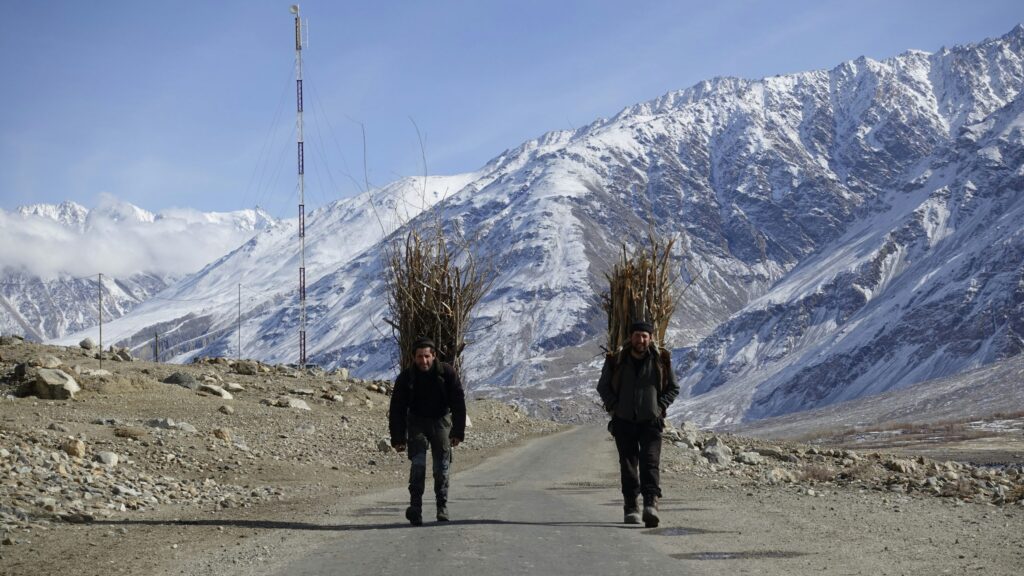Be it the development of new, high-rise apartment blocks (some built in questionable taste) or the proliferation of premium coffee shops, tea houses and restaurants (again, many decked out in questionable taste), a short stroll around the centre of Tajikistan’s capital Dushanbe suggests a city, and a country, on the up.
Indeed, one of few countries in the region to stay in the black during the Covid-19 pandemic (growth was 4.4 per cent in 2020), Tajikistan—on paper at least—has since been Europe and Central Asia’s champion of economic growth: 9.3 per cent in 2021, eight per cent in 2022, 8.3 per cent in 2023.
In its latest Economic Update for Europe and Central Asia, published on April 11, the World Bank forecasts growth in Tajikistan of 6.5 per cent in 2024—down on last year but still the highest level of growth of any country in Europe and Central Asia.
For all that, however, it nevertheless remains a low-income country and the poorest of all 15 republics that until 1991 were occupied by the Soviet Union.
It is also—except for basket case Turkmenistan—the least free. Freedom House, in its latest Nations in Transit report, also published on April 11, gives Tajikistan a democracy score of just 0.6 (out of 100), and classes the country as a “consolidated authoritarian regime”—unsurprising given that one man, Emomali Rahmon, has run the country since 1992.
The remittance trap
Alongside the noticeably buoyant activity in the construction and services sectors, Tajikistan’s growth in recent years has been driven primarily by remittances, which in 2022 accounted for more than half of the country’s entire GDP. The percentage fell to around 35 per cent in 2023, but it remains by far the most remittance-dependent country in the world. While rich in hydropower potential and some natural resources, including gold and silver, Tajikistan does not possess any significant proven oil or natural gas reserves.
This dependence on remittances makes Tajikistan vulnerable to economic and political shifts in the countries where its diaspora works—mainly Russia. That 10 Tajiks have so far been arrested in Russia in connection with a terrorist attack in Moscow in March, claimed by the Islamic State group, including four men accused of being the gunmen responsible for the deaths of nearly 150 people, has led many Tajiks to consider leaving Russia, according to Tajikistan’s Deputy Labour Minister Shahnoza Nodiri.
“We are now monitoring the situation; more people are coming [back to Tajikistan] than leaving [for Russia],” she said in an interview with Russia’s TASS news agency at the end of March. With remittances such an important part of the economy, even a small reduction could see a fall in GDP growth.
An overbearing state
Moreover, while remittances help alleviate immediate financial needs (and fuel the booming construction sector), they do not fundamentally transform the economic structure to create sustainable, high-value employment at home, where around half of the workforce remains employed in agriculture—a sector in which there has been anything but growth.
Productivity in the sector remains low due to outdated farming techniques and inadequate infrastructure. Small-scale farmers see minimal benefits from economic growth, struggling with issues like water scarcity and access to markets. The government’s efforts to introduce modern farming techniques and improve irrigation infrastructure are steps in the right direction but are sporadic and yet to make a significant impact on the ground.
The expansion of the services sector, including retail, banking, and telecommunications, indicates a diversifying economy. However, the benefits are predominantly urban-centric, often bypassing rural communities where most of the population resides.
The state’s overbearing role in the economy meanwhile remains all-encompassing with competition minimal. Indeed, Tajikistan ranks above just Turkmenistan of all countries in Europe and Central Asia when it comes to competition policy, according to the Bertelsmann Transformation Index, released earlier this month.
“Although Tajikistan has the legal and institutional framework necessary for a functioning market economy, only some segments of the economy feature genuine market competition,” the report states.
The World Bank meanwhile noted in a report last year that, “the business environment does not reward efficient firms and those with the highest growth potential.”
Social and economic challenges
Where the Tajik authorities can take some credit is in its prudent monetary policy, which aligned with currency appreciation has kept inflation relatively low in comparison with other economies in Central Asia.
However, the Asian Development Bank (ADB) predicts inflation rates in Tajikistan of 5.5 per cent for 2024 and 6.5 per cent for 2025, up from 3.8 per cent in 2023. The Bank links the expected rise in inflation to an increase in lending following deposit growth, a 40 per cent enhancement in pensions, stipends, and public sector salaries from January 1, 2024, and a 16 per cent adjustment in electricity tariffs introduced at the beginning of the year.
Slower growth in Russia meanwhile could again weaken the Russian ruble relative to the Tajik somoni and reduce remittance flows. This would exert downward pressure on the somoni, raising inflation for imported goods.
The country’s economic figures do not fully encapsulate the challenges faced by the average Tajik. Issues such as unemployment (around seven per cent), particularly among youth and women, aligned with significant emigration indicate underlying socioeconomic distress.
Additionally, the education and healthcare systems, though improving, require significant investment to elevate the quality and accessibility needed to support a thriving economy. Then there’s energy; until the delayed and over-budget Roghun Hydropower Dam—the world’s tallest—is complete, Tajiks will continue to suffer from regular power cuts.
Perhaps the most significant socio-economic issue however is climate change. Tajikistan faces key challenges from climate change because of its high dependence on natural resources—not the least of which is water. The country is the most vulnerable in the region to climate change, ranking 98th on the Notre Dame Gain Index.
According to the ADB, a shortage of arable land has created high dependency on imported food, weakening food security and increasing the population’s vulnerability to natural hazards. In both 2021 and 2022, there were clashes at the border between Kyrgyzstan and Tajikistan in a dispute over access to water. Both countries share multiple water channels with undulating trajectories and flow, which upset equitable access to water on both sides.
It’s not all about the numbers
While Tajikistan’s economic growth statistics present a facade of robust progress, the political context in which these developments occur tells a more complex story.
The centralised, tightly-controlled political system presents significant challenges to implementing comprehensive economic reforms, while the government’s predominant role in the economy, while providing a certain amount of stability and direction, also perpetuates inefficiencies and limits private sector involvement.
For Tajikistan to achieve sustainable and inclusive economic growth, it is crucial that future reforms not only address economic inefficiencies but also consider the broader political and social contexts that shape these policies.
As long as the current ruling elite remains entrenched in office, however, such reforms are unlikely.







